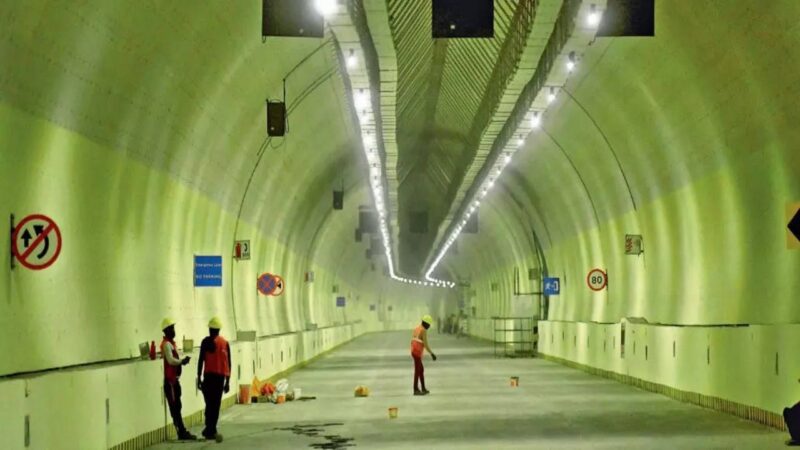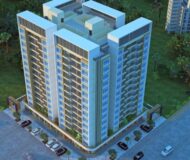
India’s First Undersea Twin Tunnels in Mumbai : A Game Changer for Urban Planning and Development
Mumbai is a bustling metropolis in India, known for its crowded streets and congested infrastructure. In recent years, the city has been looking for innovative solutions to solve urban problems. One such game-changing project is the proposed Mumbai undersea tunnel. Twin tunnels with a diameter of 12.19 meters are ready to connect Marine Drive with the Bandra-Worli Sea Link. India’s first undersea tunnel will start in Mumbai in 2024. This tunnel is 2.07 km long and is part of the Mumbai Coastal Roads Project, a 10.58 km stretch starting from the Marine Drive promenade to the Worli end of the Bandra-Worli sea link. This blog discusses the potential impact of the submarine urban planning and development tunnel in Mumbai. From reducing traffic congestion to revitalizing transport systems, this ambitious project has the potential to transform the urban landscape.
Addressing Traffic Congestion
Mumbai is notorious for its traffic congestion, which often leads to increased travel times and decreased productivity. The Mumbai Undersea Tunnel has the potential to overcome this persistent problem. By providing an efficient and direct route for commuters, the tunnel can divert traffic from congested roadways, reduce congestion levels, and improve travel times. This improvement in transportation will not only enhance the daily commute for Mumbaikars but also spur economic growth by increasing productivity and business efficiency.
Enhanced Connectivity and Transportation Systems
The Mumbai Coastal Road will significantly enhance connectivity within the city. It will connect important business districts, commercial hubs, and regional airports, making travel smoother and more convenient. This improved connectivity will have a ripple effect on other transportation systems as well. The road can act as a catalyst for the development of integrated transportation networks, such as metro systems and Bus Rapid Transit (BRT) corridors. By integrating various modes of transport, the tunnel can revolutionize Mumbai’s transportation infrastructure and provide seamless connectivity for its residents.
Boosting Urban Development and Economic Growth
The construction of the Mumbai Undersea Tunnel will undeniably boost urban development and economic growth in the city. The tunnel will open up new avenues for development and allow urban planners to create well-planned communities and business districts. The development potential around the tunnel will attract investors and spur economic activity, leading to job creation and overall economic prosperity. Additionally, improved connectivity and reduced travel times will make Mumbai a more attractive destination for businesses, potentially attracting new industries and industries.
Environmental Considerations
While the Mumbai Undersea Tunnel offers exciting possibilities, it is crucial to increase its environmental impact. The construction of the tunnel should be undertaken with environmental sustainability and considering factors such as marine life protection and pollution control. The planning and execution phases should prioritize sustainable practices such as reducing carbon emissions and minimizing disruption to the marine ecosystem. Additionally, the tunnеl should be designed to withstand the effects of climate change, such as rising sea levels and extreme weather events, and to ensure its long-term viability.
Ensuring Affordability and Accessibility
As with any major infrastructure project, ensuring affordability and accessibility is crucial. The Mumbai Coastal Road should be designated with the needs and financial capabilities of all citizens in mind. The pricing structure should be fair and reasonable, ensuring that the tunnеl is accessible to people of all income levels. Additionally, complementary transportation systems, such as freight buses, are the last mile connectivity options and should be developed to ensure that the benefits of the train reach all citizens of the city.
The Mumbai Coastal Road has the potential to revolutionize urban planning and development in the city. By adding traffic congestion, enhancing connectivity in transportation systems, and boosting urban development, economic growth, environmental affordability, and the tunnel project can reshape Mumbai’s landscape and improve the quality of life for its residents. However, it is essential to approach the project with careful planning, incorporate sustainability and accessibility, and engage citizens at every step. With appropriate measures and strategic execution, the Mumbai Undersea Tunnel can become a game changer for urban planning and development, setting a benchmark for other cities grappling with similar challenges. As Mumbai evolves, this ambitious project has the potential to pave the way for a more sustainable, connected, and prosperous future.


